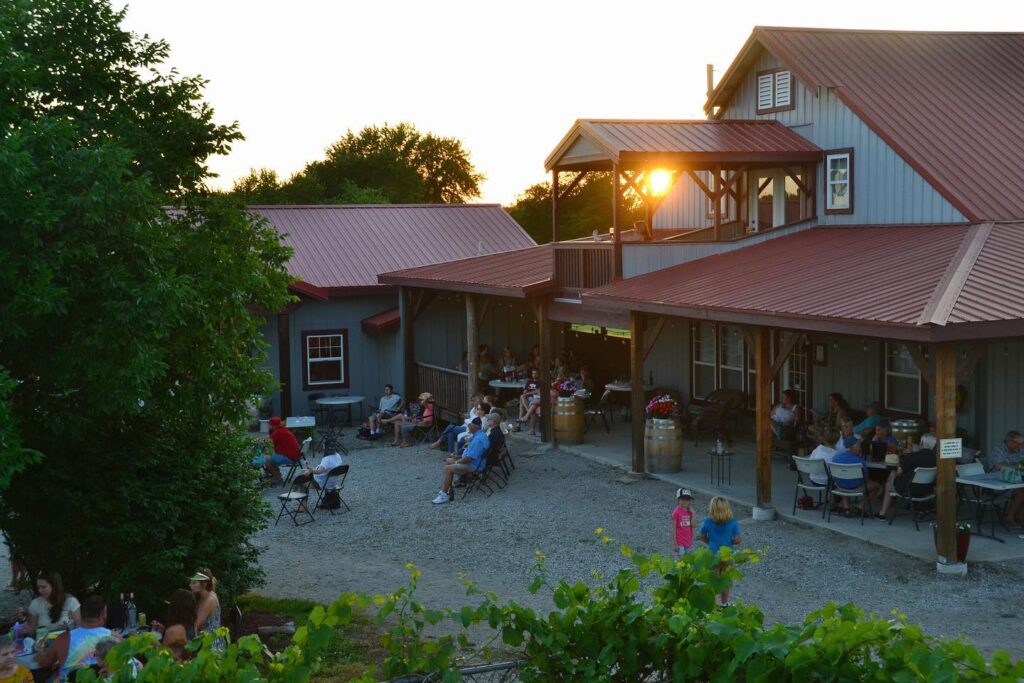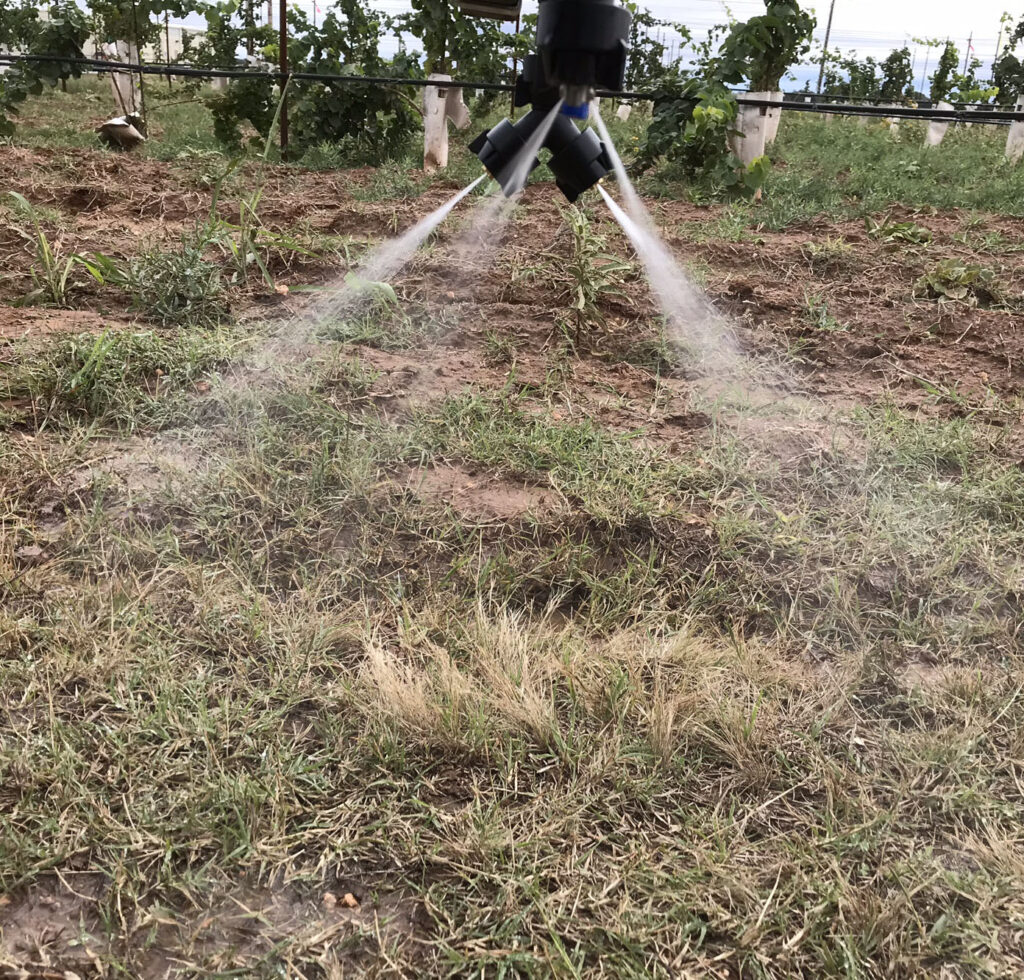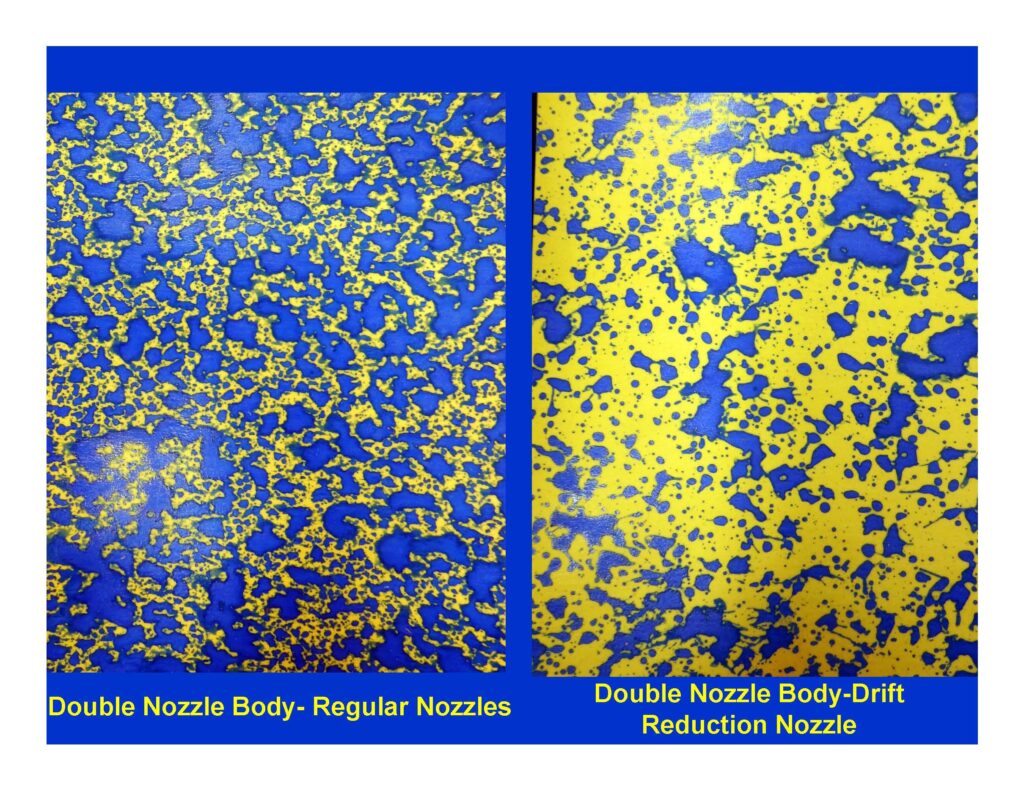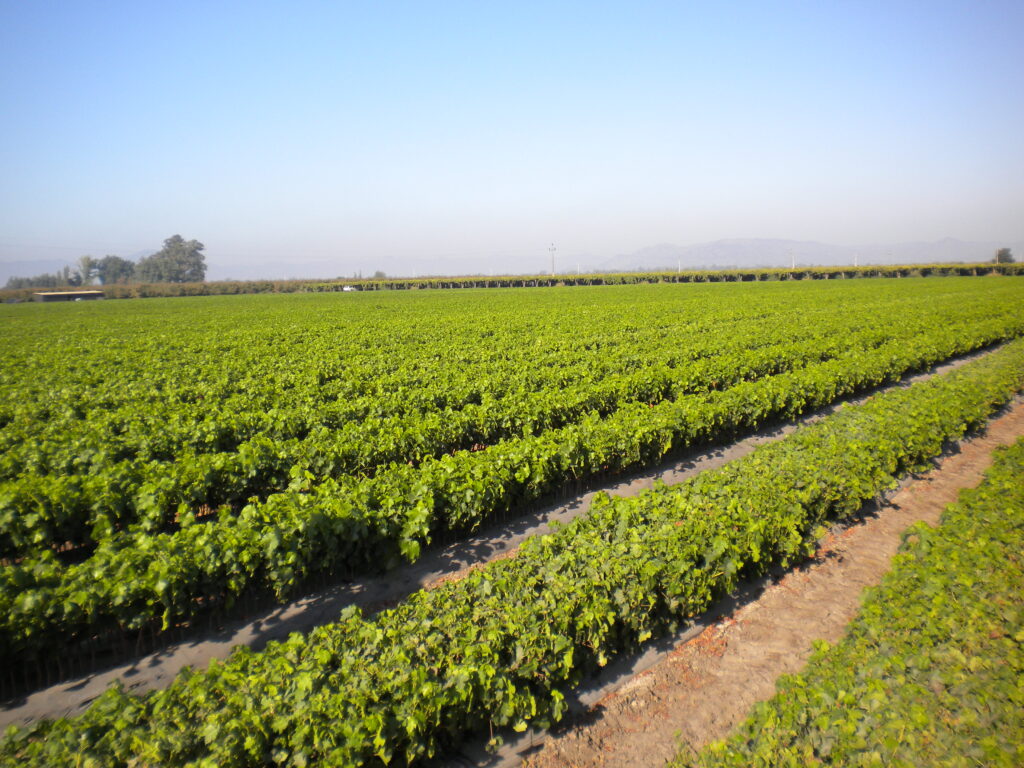By: Alyssa L. Ochs
As many vineyards take a sustainable and eco-friendly approach to grape growing, habitat destruction has become a topic worth learning more about. Delicate ecosystems depend upon agricultural biodiversity to help the land and native species thrive, yet at the same time, vineyards must safeguard their crops to stay in business and turn a profit.
From experts in the field of wildlife control, here are some ideas about how to maintain a healthy vineyard without unnecessarily impacting the environment and the animals that live nearby.
The Importance of Agricultural Biodiversity
Stephen McCracken, the marketing operator at Trident Enterprises, told The Grapevine Magazine that winemakers are increasingly turning to biodiversity to mitigate the effects of climate change on their vineyards. Based in Waynesboro, Pennsylvania, Trident is a leading fence supply distributor that serves customers throughout North America.
“Biodiverse vineyards can help improve soil health, reduce the need for pesticides and fertilizers and provide natural pest control,” McCracken said. “Additionally, a diverse ecosystem can help to regulate temperature and moisture levels, making the vineyard more resilient to extreme weather events. By promoting biodiversity in their vineyards, winemakers can improve the quality of their wine and contribute to the planet’s health.”
McCracken described how biodiversity could protect against diseases and drastic climate fluctuations.
“For example, incorporating a variety of cover crops amidst the vine rows attracts a diverse insect population to the vineyard,” McCracken said. “This practice replenishes soil nutrients and maintains cooler ground-level temperatures during daylight hours. Additionally, the preservation of surrounding forests serves as a reservoir of cool air. This process aids in preserving acidity and aromatic compounds in maturing grapes. Moreover, the vineyard benefits from the genetic diversity among the individual vines. Instead of planting identical genetic clones in consecutive rows, growers can safeguard against extensive losses caused by pests and severe weather conditions through Massal Selection.”
However, McCracken said that biodiversity also presents challenges for vineyards, such as increased labor expenses and unwelcome visitors like birds and deer. But by actively promoting a net positive approach to biodiversity, McCracken said that vineyard owners can cultivate resilience in their vines and ensure the long-term success of their businesses.
Kevin Adams from the Sisters, Oregon-based company Bird Gard, told The Grapevine that as the world moves toward preferring more natural practices in producing their food, biodiversity has become an important consideration for many growers. Bird Gard has been the world leader in electronic bird control for over 30 years.
“For them, the balance lies in producing a reliable yield while utilizing affordable natural and organic systems,” Adams said. “The goal is to work with nature to enhance the ecosystem in which the vineyard is raised. We used to think of the vineyard as a standalone plot, with attributes distinct from its nearby neighbors. For many attributes of the vineyard, that is still true. However, birds, in particular, flow from vineyard to vineyard, and growing vines amidst their various homes requires a perspective that reaches beyond a single vineyard.”
Sustainable Wildlife Control Methods
Fortunately, there are conservation-friendly approaches to vineyard wildlife control that have minimal environmental impacts and do not promote habitat destruction. One example is a deer fence to deter these herbivorous animals from eating grape leaves and fruits.
“Installing a DeerBusters deer fence is an effective deterrent, preventing deer from accessing the vineyard and causing destruction,” said McCracken from Trident. “The fence is a barrier that blocks deer entry, safeguarding the vineyard and ensuring the vines’ undisturbed growth and development. At DeerBusters, our best fence for large areas is the Fixed Knot Deer Fence. It is the strongest metal deer fence type for deer exclusion on today’s market.”
“A deer fence should typically be at least eight feet tall, as deer are skilled jumpers and can effortlessly clear shorter barriers,” said McCracken. “Additionally, the material used for the fence must be sturdy and resistant to damage for long-term functionality. Professional installation is often recommended to ensure the fence is properly anchored and secure.”
Allen Hurlburt from H&M Gopher Control in Tulelake, California told The Grapevine about some of the concerns vineyard growers approach his company regarding burrowing rodents.
“Our equipment, the PERC (Pressurized Exhaust Rodent Control), collects the exhaust produced by a gas motor that drives a compressor and routes that exhaust gas through a set of cooling coils into the intake ports of a compressor,” Hurlburt explained. “The gas is pressurized in a pressure tank and injected into rodent burrows. While the exhaust gas is 2.5 percent carbon monoxide, initially the purging of the air out of the burrow, replacing it with exhaust gas causes asphyxiation and then death via CO poisoning.”
Customers often ask Hurlburt if the PERC effectively eliminates gophers and squirrels, and the answer is yes. Dr. Roger Baldwin from the University of California, Davis conducted a study on two acres of almond orchard with a heavy infestation of ground squirrels and reported a 100 percent kill rate after one treatment.
Yet potential H&M Gopher customers are also concerned about the eco-friendly aspects of PERC units and whether non-targeted wildlife are at risk when treating rodent burrows.
“While analyzing what is actually going on in the burrow during the injection of exhaust gas is difficult, we have not had one report of a non-targeted animal negatively affected by treatment,” Hurlburt said.
Jon Stone from Avian Enterprises, LLC in Sylvan Lake, Michigan shared, “Avian Control® Bird Repellent provides the vigneron with a bird control technology that repels feathered pests, that is easy to apply and economical, is not phytotoxic and has no impact on the fine wines produced from the treated grapes. Due to M.A.’s simple chemical structure, its rapid biodegradability and the extremely low level of dosing, Avian Control® does not interfere with or alter the natural progress of the fermentation process.”
Stone said that all of the ingredients in Avian Control® are found in food products designed for human consumption. The U.S. Food and Drug Administration has classified all ingredients in the Avian Control® formula as “Generally Regarded As Safe.” Also, the U.S. EPA has determined that the active ingredient of Avian Control®, methyl anthranilate (M.A.), is free from any residual tolerance requirements. M.A. is entirely biodegradable, occurs naturally and is found in bergamot, black locust, gardenia, jasmine, lemon, mandarin oranges and strawberries.
He also said that several vintners’ side-by-side tests of Avian Control® treated and untreated grapes from the same field showed no difference in taste, aroma, bouquet, complexity or color.
“The first reason is that the active and inert ingredients in Avian Control® do not penetrate the skin of the fruit,” Stone said. “Avian Control® will not translocate into the treated crop. Translocation is the tendency of a compound to move through the tissues of a plant. This effect is particularly troubling when repellents translocate from the outer skin of a fruit through the skin and into the fruit body. When this occurs, a distinct change in taste can be noticed. Due to its unique formulation, Avian Control® remains on the surface of the plant and its fruit where it is available to repel birds and does not translocate into the plant or its fruit, preserving the natural taste of the crop. This is an important difference between Avian Control® and other bird repellent products currently available.”
“The second is the very low rate of application of Avian Control and its positive biodegradability profile,” said Stone. “When applied to your grapes at the highest recommended rate of 32 ounce per acre, based upon a yield of three tons of grapes per acre, the level of active ingredient is only 0.6 parts per million. For a yield of 6,000 pounds of grapes per acre, only 6.4 ounces of M.A. is applied. Given the biodegradability of M.A., after several days the amount is even lower. When MA biodegrades, it breaks down into the simple elements of carbon, hydrogen, nitrogen and oxygen, all found naturally in grapes. Other bird repellants with M.A. require application rates of six to 10 times higher than Avian Control®.
Adams from Bird Gard shared that his company’s systems create a natural fear and flee response in birds through bioacoustics.
“The systems do not harm the birds or impact their health in any way,” he said. “We don’t just speak their language telling birds to leave. We mimic the frequency ranges of each species to deliver a high quality and realistic sound – something that matters to birds. These distress calls also bring in predator birds looking for a perceived easy meal. This results in a natural falconry occurring in a grower’s field. Unlike lasers, or other devices, our calls target only the birds most likely to be damaging the crop. Other beneficial birds remain active.”
Wildlife Control Innovations
In vineyard wildlife control, there are some exciting innovations on the horizon. McCracken from Trident told us about the newest deer fence on the market, a seven-foot, graduated welded wire fence that can stop deer and other animals away from grapes.
“Featuring a tighter mesh on the lower three feet, it keeps smaller unwanted animals out with 2″x1″ wire spacing,” McCracken said. “The upper section consists of a 2″x2″ mesh. This new fence product is an excellent choice for restricting small or large wildlife around the vineyard.”
Adams from Bird Gard said that through constant innovation, Bird Gard has come a long way from the old squawk box.
“Today’s Bird Gard utilizes software systems to specifically target the bird’s natural ability to habituate to stimuli that is repetitive,” he said. “With our newest innovation, IntelliGard OS, we have specifically addressed habituation through a substantially increased call library, differing time-off intervals and a more realistic playback experience. The scope of calls allows for greater randomization, causing the targeted species to struggle to detect a pattern in the stimuli. Bird Gard is the only company that utilizes a realistic bioacoustic that can constantly change to address specific species habituation.”
Wildlife Control Methods to Reconsider
However, there are specific wildlife control methods that vineyards may choose to limit or avoid to protect and preserve native animals, such as lethal traps and poisoning.
“These methods harm targeted wildlife and can have unintended consequences by harming non-targeted animals and disrupting the ecological balance,” McCracken from Trident said. “Instead, vineyards should consider implementing alternative control methods, such as habitat modification, which involves creating favorable conditions for desired wildlife species and encouraging them to stay away from areas where they might cause damage.”
“Pesticides pose a significant risk to wildlife health, contaminate water sources and negatively impact the surrounding environment,” McCracken added. “Alternative methods are available, such as integrated pest management, which utilizes a combination of cultural, biological and chemical controls to minimize pesticide use. This comprehensive approach allows vineyards to control pests effectively while safeguarding the well-being of wildlife species and maintaining the ecological balance necessary for a healthy ecosystem.”
Adams from Bird Gard said, “When it comes to bird deterrents, pesticides, poisons and shooting of birds should be avoided at all costs. There are plenty of other deterrents that won’t harm animals, the grapes or the soil. While we do not discourage the use of other deterrents in conjunction with Bird Gard’s bioacoustics systems, ours is the only one that targets individual species and can be randomized to reduce habituation. Although no bird deterrent can guarantee to get rid of 100 percent of your birds, unless you are growing indoors, we will guarantee a customer’s satisfaction. If a customer isn’t happy with the results, we will buy back our systems at full price at any point within a year. No other bird deterrent company can tell you that!”
Final Thoughts on Controlling Wildlife
With deer overpopulation becoming a pressing issue in many regions, many vineyards face degraded habitats, crop damage and an increased risk of vehicle collisions. Yet McCracken from Trident maintains that integrating a strong deer fence is a surefire way to ensure the prosperity of vineyard harvest for years to come and help wildlife coexist harmoniously with human settlements.
“In vineyards, it is essential to be mindful of the various wildlife control methods used,” McCracken said. “Avoiding or limiting those that could harm wild animals or disrupt the delicate ecological balance should be considered. By choosing alternative methods, such as deer fencing, vineyards can effectively manage wildlife while protecting biodiversity and ensuring the long-term sustainability of their operations.”
Regarding burrowing rodents, Hurlburt said the fundamental questions that need answers are these pests’ positive and negative aspects in a vineyard.
“There is opinion that gophers help loosen and aerate the soil,” Hurlburt said. “I doubt that there are any vineyard operators that subscribe to this philosophy. Gophers love young grapevine roots. They can devastate a new vineyard. Drip irrigation lines can be damaged by gophers, and the mounds made by gophers, as well as the open burrows made by ground squirrels, are very detrimental in vineyard operations. However, the injection of exhaust gas does not have any negative effect on the crop and its root structure.”
“Much like taking vitamins during flu season, humane bird control needs to start before the birds show up,” said Adams from Bird Gard. “Bird pressure in a vineyard can vary from year to year, and you must always be ready for the flock of 10,000 starlings to show up on your doorstep. Utilizing bird deterrent to reduce bird pressure should be part of your growing protocol and considered as a best practice when dealing with a hungry wild animal.”










